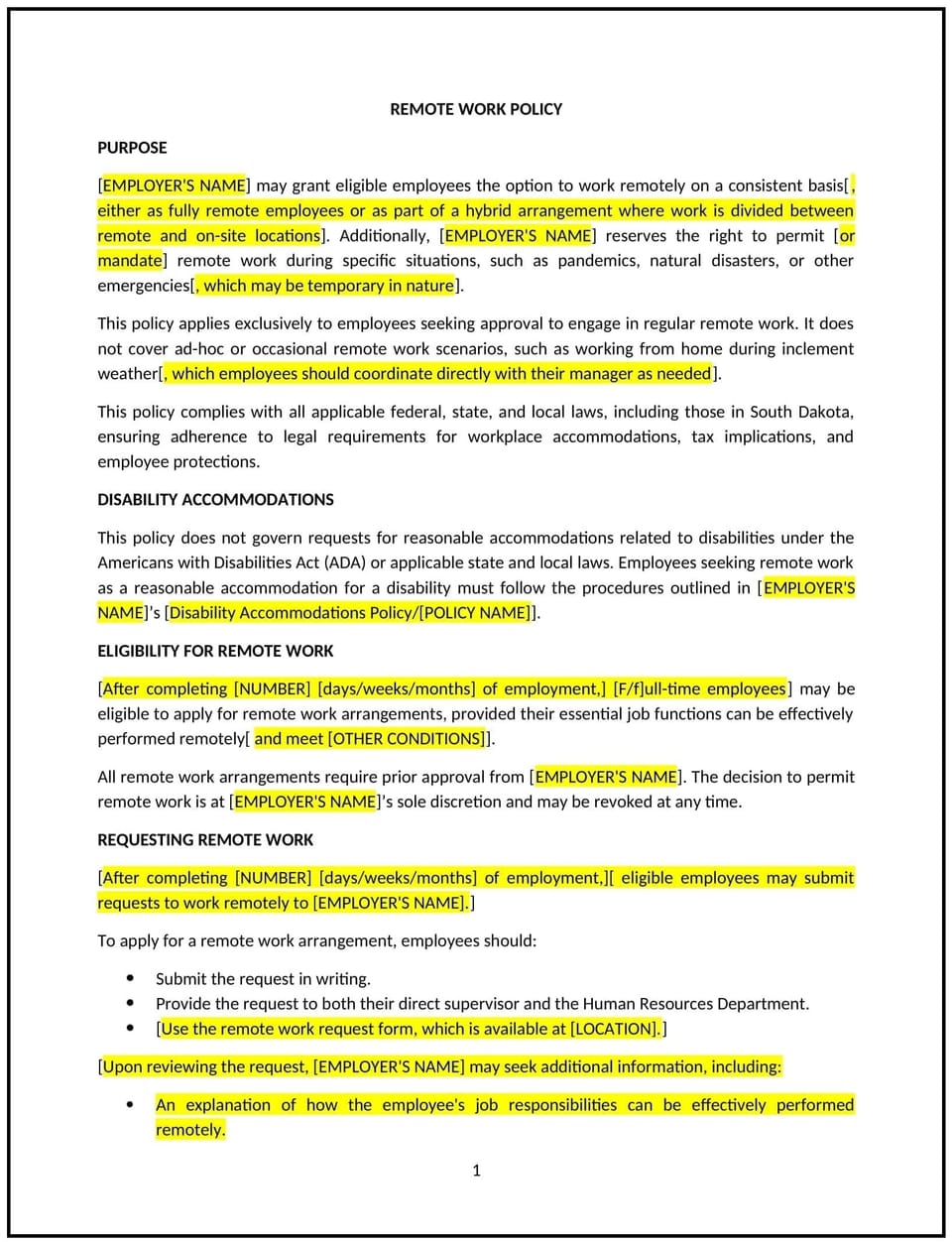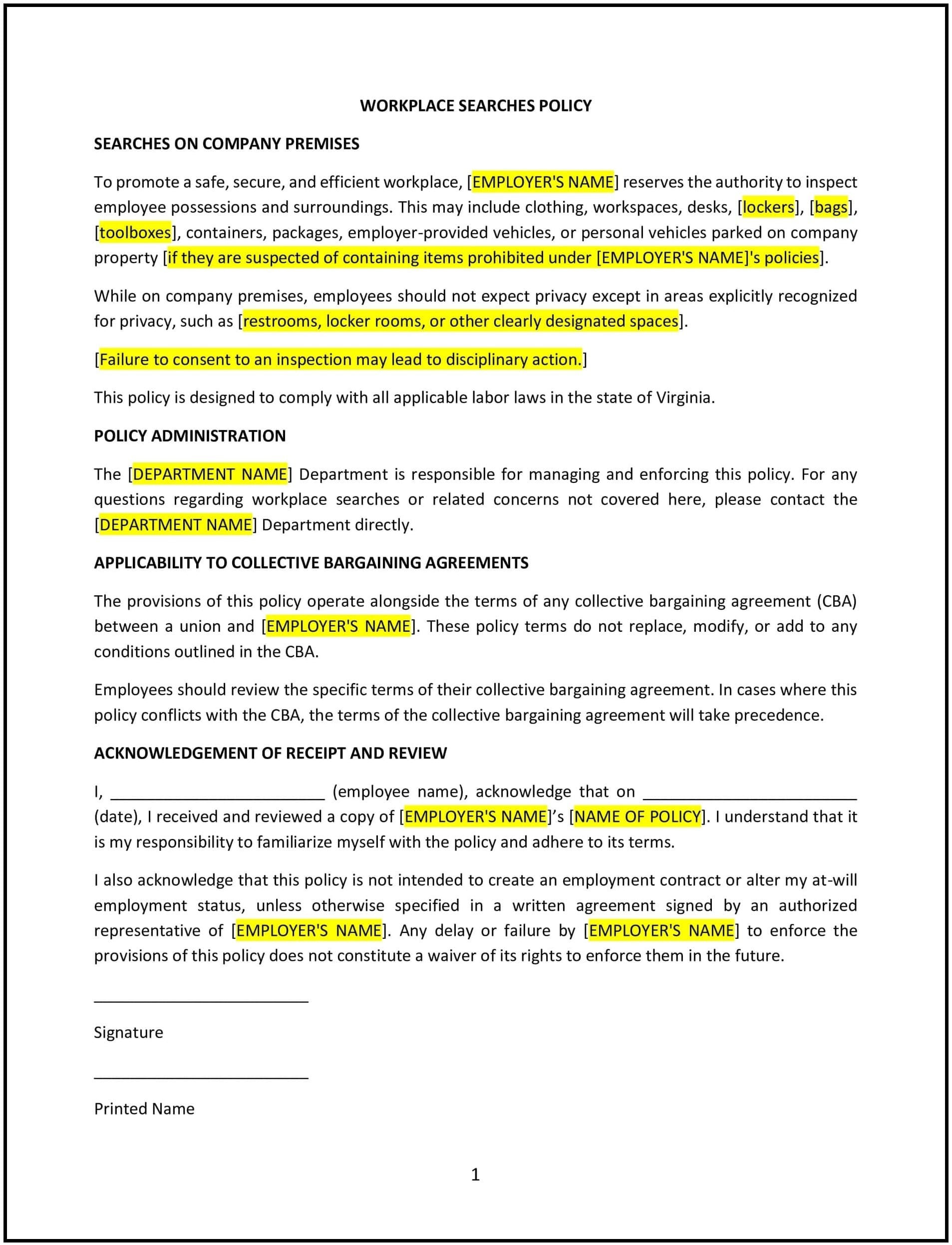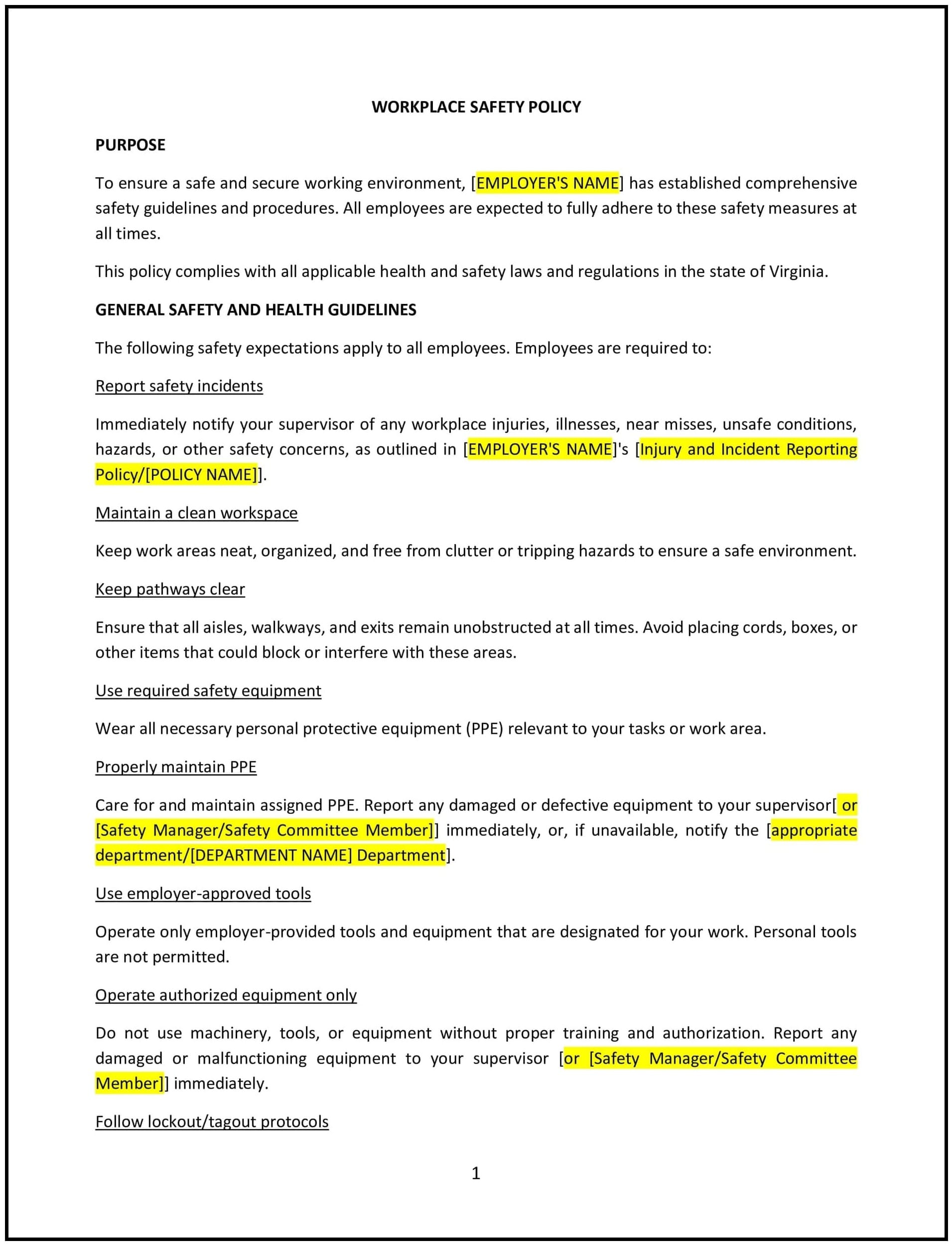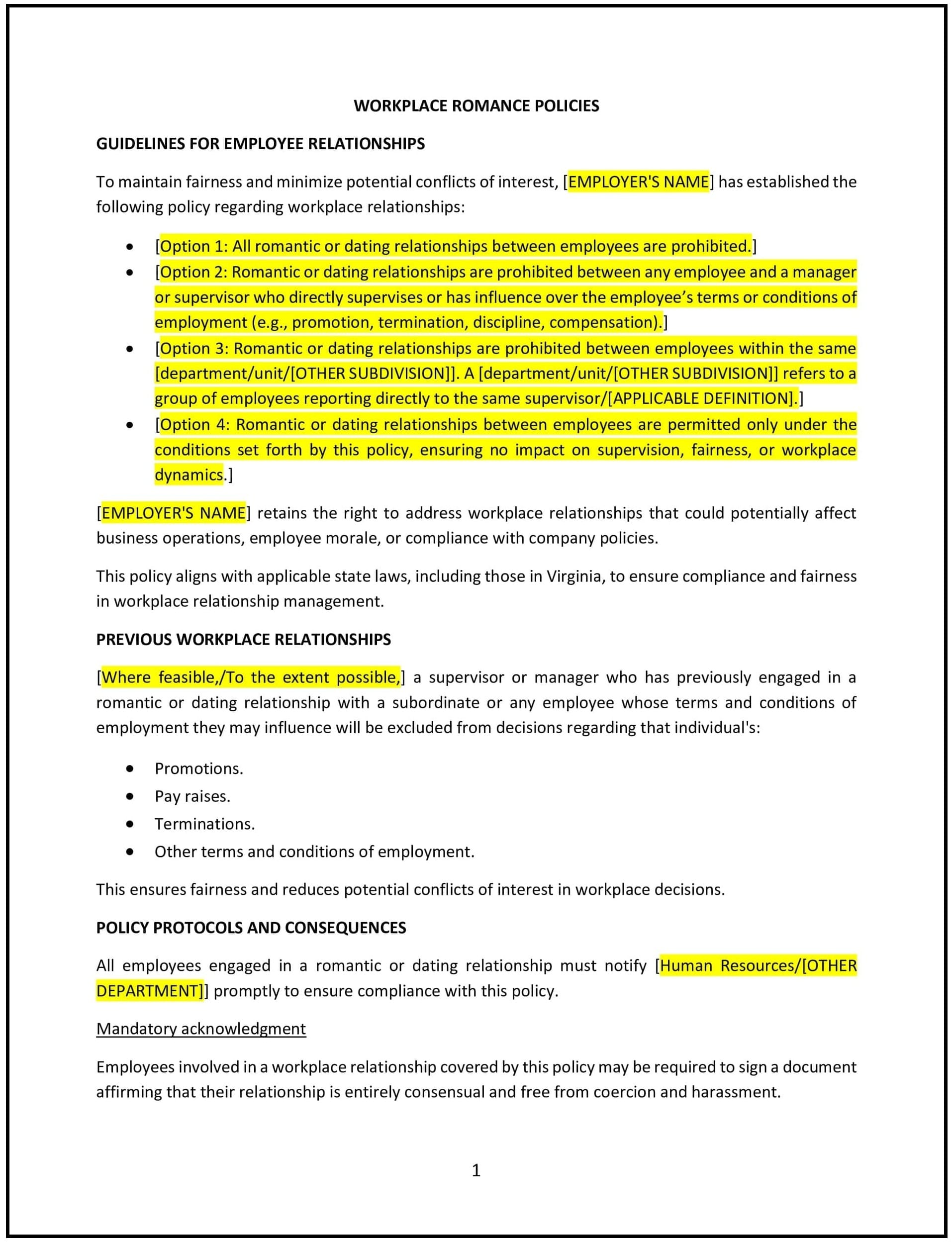Remote work policy (South Dakota): Free template

Remote work policy (South Dakota)
This remote work policy is designed to help South Dakota businesses establish guidelines for employees working outside the traditional office environment. It outlines procedures for requesting, approving, and managing remote work arrangements.
By adopting this policy, businesses can promote flexibility, enhance employee satisfaction, and align with general best practices for remote work.
How to use this remote work policy (South Dakota)
- Define remote work: Explain what constitutes remote work, such as working from home or another off-site location.
- Establish eligibility criteria: Specify requirements for employees to qualify for remote work, such as job role or performance.
- Set request procedures: Provide steps for employees to request remote work, including required approvals and documentation.
- Address performance expectations: Outline how employee performance will be evaluated under remote work arrangements.
- Train managers: Educate supervisors on managing remote teams and maintaining productivity.
- Monitor implementation: Regularly review remote work arrangements to ensure adherence to the policy.
- Review and update: Assess the policy annually to ensure it aligns with evolving business needs and remote work trends.
Benefits of using this remote work policy (South Dakota)
This policy offers several advantages for South Dakota businesses:
- Promotes flexibility: Demonstrates a commitment to helping employees balance work and personal responsibilities.
- Enhances employee satisfaction: Provides employees with flexibility, boosting morale and retention.
- Increases productivity: Allows employees to work in environments where they are most productive.
- Reduces overhead costs: Minimizes expenses related to office space and utilities.
- Supports best practices: Aligns with industry standards for remote work management.
Tips for using this remote work policy (South Dakota)
- Communicate the policy: Share the policy with employees and include it in the employee handbook.
- Provide training: Educate managers on managing remote teams and maintaining productivity.
- Monitor implementation: Regularly review remote work arrangements to ensure adherence to the policy.
- Address issues promptly: Take corrective action if remote work arrangements negatively impact workflow or performance.
- Update regularly: Assess the policy annually to ensure it aligns with evolving remote work trends.
Q: How does this policy benefit businesses?
A: By offering remote work options, businesses can promote flexibility, enhance employee satisfaction, and increase productivity.
Q: What are examples of remote work arrangements?
A: Examples include working from home, coworking spaces, or other off-site locations, as outlined in the policy.
Q: Can all employees request remote work?
A: Eligibility may depend on job role, performance, and business needs, as outlined in the policy.
Q: How should businesses handle performance under remote work?
A: Businesses should set clear performance expectations and evaluate employees based on results rather than hours worked.
Q: How often should businesses review this policy?
A: Businesses should review the policy annually or as needed to ensure it aligns with evolving remote work trends.
This article contains general legal information and does not contain legal advice. Cobrief is not a law firm or a substitute for an attorney or law firm. The law is complex and changes often. For legal advice, please ask a lawyer.


